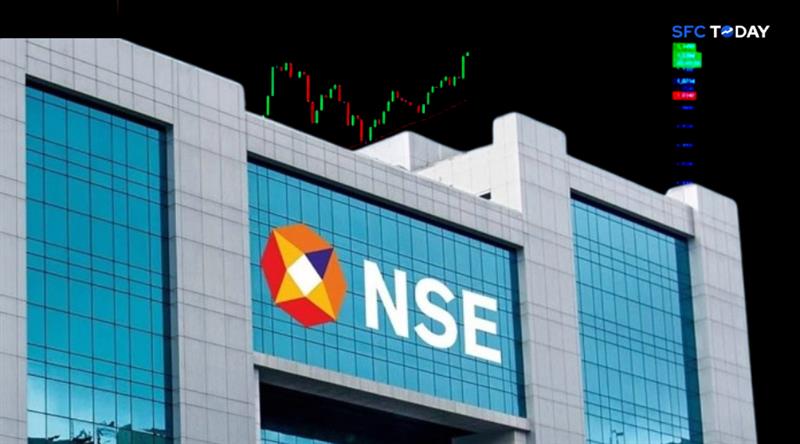The exchange has offered to settle the matter by paying a record settlement amount of around ₹1,300 to ₹1,400 crore
The National Stock Exchange of India (NSE) is preparing for a major event in its history: its long-awaited Initial Public Offering (IPO). As India’s largest stock exchange and the world’s top derivatives exchange by volume, NSE’s IPO has been the subject of attention for many years. However, various regulatory issues and legal troubles delayed this move. Now, with fresh developments and positive signals from market regulators, NSE seems to be inching closer to making its IPO a reality.
NSE’s journey so far
NSE’s plans for an IPO started nearly a decade ago. The exchange filed its draft papers with the market regulator in 2016. However, allegations of unfair trading practices using co-location services (where certain brokers allegedly got faster access to trading systems) put the IPO plans on hold. This co-location case became a major hurdle, leading to investigations, penalties, and legal cases.
In 2025, NSE has made serious efforts to close this chapter. The exchange has offered to settle the matter by paying a record settlement amount of around ₹1,300 to ₹1,400 crore. This would be the highest settlement made with India’s market regulator, SEBI (Securities and Exchange Board of India). NSE’s aim is to resolve these issues once and for all so it can finally move ahead with its IPO plans.
Signals from SEBI
SEBI, the market watchdog, has stated publicly that there are no further obstacles in NSE’s path to listing. The chairman of SEBI, Tuhin Kanta Pandey, has confirmed that all major regulatory requirements have been addressed. This is an important statement because it reflects the regulator’s readiness to give NSE the green light, once the settlement is completed.
Reports suggest that SEBI is expected to issue a no-objection certificate to NSE within a few months, probably by July 2025. Once NSE gets this certificate, it will be able to file fresh documents for its IPO and start the process of listing its shares.
Financial strength and market value
NSE’s financial performance has been strong, which makes its IPO even more attractive to investors. In the financial year 2024-25, NSE’s net profit grew by nearly 47% compared to the previous year, reaching over ₹12,000 crore. Its revenues also grew by around 17%, crossing ₹19,000 crore.
The exchange’s success has driven up the price of its shares in the unlisted (grey) market. In recent months, NSE’s share price in this unofficial market has risen by about 60%, touching around ₹2,400 per share. Analysts estimate that NSE’s total value could be close to $58 billion when it lists, placing it in the same league as some of the world’s largest stock exchanges like Nasdaq and Deutsche Börse.
What will the IPO mean for NSE and the market?
NSE’s IPO is expected to be one of the biggest in the history of India’s financial sector. It will not only allow NSE to raise funds for future growth but also provide an exit opportunity for some of its existing shareholders. Big names like the Life Insurance Corporation of India, State Bank of India, Morgan Stanley, and the Canada Pension Plan Investment Board hold stakes in NSE. The listing would help them unlock the value of their investments.
India has been a bright spot for IPO activity in Asia, even surpassing China in 2024. NSE’s IPO would further boost India’s image as a strong capital market destination. It could also increase transparency and improve governance standards at NSE as a listed company would be subject to greater public and regulatory scrutiny.
NSE’s future plans
Beyond the IPO, NSE has several plans to grow and improve its infrastructure. The exchange is working on upgrading its co-location facilities to meet the growing demand from high-frequency trading firms. It plans to add around 2,000 new racks at its co-location data centers to improve speed and reduce trading delays.
NSE is also focusing on helping smaller companies and startups access the stock market. Its SME platform, NSE EMERGE, has seen more than 550 companies get listed so far, raising over ₹14,000 crore. NSE has also updated the bidding rules for SME IPOs, with new rules coming into effect from July 2025, making it easier for small businesses to raise funds.
Steps remaining before IPO
Although things look positive, a few key steps are still pending. First, SEBI needs to officially approve the settlement of the co-location case. Once this is done, NSE will receive the no-objection certificate. After this, NSE will need to approach the Supreme Court to close any ongoing cases related to these matters.
Once these legal and regulatory tasks are completed, NSE can file fresh documents (known as the draft red herring prospectus) for its IPO. Market experts expect that if all goes smoothly, NSE’s shares could be listed by the end of the financial year 2025-26, which means before March 2026.
Risks and challenges
Despite the progress, there are still some risks that could delay or affect NSE’s IPO. Legal approvals and settlements might take longer than expected. Market conditions also play a role — if there is volatility or uncertainty in global or Indian stock markets, NSE might choose to delay its IPO to get the best price for its shares.
Another challenge is the high valuation. While NSE’s financial performance supports a premium valuation, investors will closely watch whether the company can maintain this performance in the years ahead. Any slip in profits or growth could put pressure on its share price once listed.
NSE’s IPO is shaping up to be a landmark event for India’s financial markets. With regulatory hurdles almost cleared and strong financial results, the stock exchange is in a good position to move forward. If the remaining legal and regulatory steps are completed on time, NSE’s shares could be trading on the market within the next few months. This would not only mark a major achievement for NSE but also strengthen India’s position in the global financial landscape.


